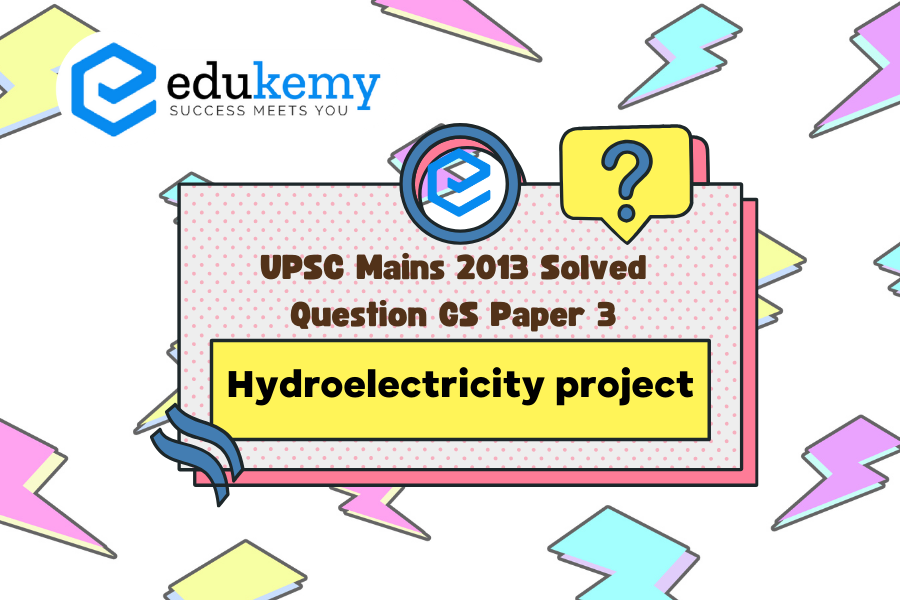A run-of-the-river hydroelectricity project is a type of renewable energy initiative that harnesses the power of flowing water to generate electricity without the need for a large reservoir. Unlike traditional hydroelectric projects that involve the construction of dams and reservoirs to regulate water flow, run-of-the-river projects utilize the natural flow of rivers and streams to generate power. Instead of impeding the flow of water, these projects divert a portion of the river’s flow through a penstock, which channels the water to turbines that generate electricity. One key difference from other hydroelectric projects is that run-of-the-river schemes typically have a smaller environmental footprint since they do not require the extensive flooding of land associated with dam construction. Additionally, they often have less impact on downstream ecosystems and communities since they maintain more natural flow patterns in the river. However, their electricity output can vary depending on seasonal changes in water flow, unlike conventional hydroelectric plants with reservoirs that can store water for consistent power generation.
Tag: Infrastructure: energy, ports, roads, airports, railways etc. Conservation, environmental pollution and degradation, environmental impact assessment.
Contents
Decoding the Question:
- In Intro, you need to define the run of the river (ROR) hydropower project.
- In Body,
- Differentiate between ROR and other hydropower projects.
- Try to Conclude by underlining the importance of the ROR.
Answer:
Run-of-river hydroelectric (ROR hydro) projects generate electricity by using part of natural stream flows and natural elevation differences found in mountainous regions. With ROR hydro, a portion of the mountain stream is diverted by an intake structure into a buried pipe (called “penstock”) where it is channelled downstream into one or more turbines. The flowing water causes the turbine to spin. A generator is directly attached to the turbine and creates electricity. The water from the turbine is released unaffected back into the stream.
ROR hydro differs from conventional storage hydro in several ways:
- In conventional storage hydro, a dam is placed across a river to create a reservoir. Almost all of the water is impounded behind the dam and the flow downstream is regulated, which changes the natural variation of flow significantly for the entire length of the downstream river.
- With ROR hydro, only a portion of the stream flow is affected, and even then, only a short length of the river experiences reduced flows (the so-called “diversion reach” between the intake and the powerhouse). The volume of water a ROR project may divert through the penstock to run the turbine depends significantly on a stream`s morphology and environmental characteristics, but a typical power plant would utilize less than two-thirds of a river’s total annual flow.
- Immediately below the powerhouse, all flows diverted to produce power are returned to the stream and the natural downstream flow patterns are preserved.
- ROR hydro has a much smaller environmental footprint compared to traditional reservoir storage hydro projects. ROR projects typically have very little water storage capacity (the so-called “pondage”), compared to many weeks and months of storage found at conventional Large Hydro dams.
- The advantage of not having a large amount of water storage is that less land has to be flooded and therefore the potential footprint impacts are reduced, but without storage ROR hydro are able to supply electricity only as the flow allows (and flow conditions conducive to ROR power generation do not always correspond to times when electricity demand is high). Accordingly, both technologies have advantages and disadvantages and should be viewed as complementary resources.
Thus, the benefit of the ROR is huge both from an environmental point of view and generation of electricity as well. ROR projects are increasingly focused on small rivers and areas which are earthquake prone. ROR can be helpful in achieving dual objectives of electricity for all and sustainable development.
In case you still have your doubts, contact us on 9811333901.
For UPSC Prelims Resources, Click here
For Daily Updates and Study Material:
Join our Telegram Channel – Edukemy for IAS
- 1. Learn through Videos – here
- 2. Be Exam Ready by Practicing Daily MCQs – here
- 3. Daily Newsletter – Get all your Current Affairs Covered – here
- 4. Mains Answer Writing Practice – here


